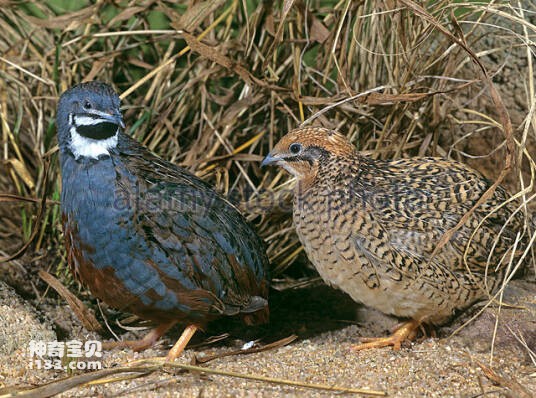Synoicus chinensis
IUCN
LCBasic Information
Scientific classification
- name:Synoicus chinensis
- Scientific Name:Synoicus chinensis
- Outline:Landfowl
- Family:Chickeniformes P.family Cyanothorax
Vital signs
- length:12-14cm
- Weight:No textual research information is available
- lifetime:No textual research information is available
Feature
The male bird has a very bright plumage, with a large black spot in the center of the throat
Distribution and Habitat
Origin: Australia, Brunei Darussalam, Cambodia, China, India, Indonesia, Lao People's Democratic Republic, Malaysia, Myanmar, Nepal, Papua New Guinea, Philippines, Singapore, Sri Lanka, Thailand, Timor-Leste and Viet Nam.
Introduced: Guam.
It is found in plains and low mountain areas, in tall reeds in grasslands and swamps along rivers, in grass along the edges of river gullies in plains or mountains, and in bamboo forests and sparse undergrowth. They also wander in small groups around the edges of thickets and bamboo forests. It is rare in low elevation grasslands, shrubs and rice fields in southern and eastern China.
Appearance
Male: dark brown on top of head to upper nape, dark brown on feather base; Central head with light yellow stripe; The forehead, eye first, eye lines and neck side are blue-gray; There is a white stripe under the eye first, extending to the eye later; Buccal black; The cheeks are white under this stripe; The lower part of the back neck, shoulder and back are dark brown, mixed with black moth spots and thicker transverse spots, the back feathers often have light yellow and nearly white plume; The upper tail cover and the inner secondary flight feathers are also chestnut brown, mixed with dark brown fine spots; The tip of the large cover and the inner secondary fly feathers is studded with maroon; The primary coverts and all outer flying feathers are yellowish brown without spots. The tail is maroon. Chin and throat are black, with a black stripe extending upward from the posterior Angle to the ear feathers; The front neck is white, the back is surrounded by a narrow black margin; The che
Details
Synoicus chinensis has 10 subspecies, including Blue-breasted Quail, King Quail, and Asian Blue Quail.

Blue-breasted quails are resident or summer migrants. In the morning and evening, it appears in the open to forage for grains, grass seeds, etc., and also eats insects, spiders, and termites. Fly fast and low in a straight line. It feeds on grains, grass seeds, insects, spiders, etc. The call is a pleasant double whistle ti-yu, ti-yu sound.
Blue-breasted quails breed from June to August and nest in plains, low hills and mountains at an altitude of about 2000 meters. The nest is mostly placed in natural pits on the ground. Each clutch lays 4-8 eggs, the eggs are pale olive brown or pale yellow in color, sometimes with thin and sparse dark spots. The size is 22.9-27.7 x 17.3-20.4 mm. Incubation period is 16 days.
Listed in the International Union for Conservation of Nature Red List of Threatened Species (IUCN) for 2016 ver 3.1 - Not Threatened (LC).
It was included in the List of Beneficial Terrestrial Wildlife under State Protection or of Important economic and scientific research Value issued by the State Forestry Administration of China on August 1, 2000. (Note: Item 86).
It is listed as a rare species in the Red Book of Endangered Animals in China.
In October 2020, the State Forestry and Grass Administration issued the Notice on Regulating the Scope of Classified Management of fasting Wild Animals, prohibiting breeding activities for the purpose of eating blue breast quail, and guiding farmers to stop breeding except for special circumstances such as the retention of appropriate provenance.
Protect wild animals and eliminate wild meat.
Maintaining ecological balance is everyone's responsibility!








